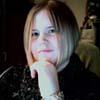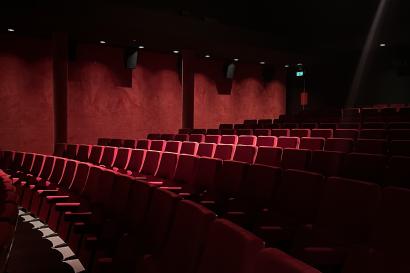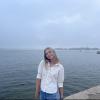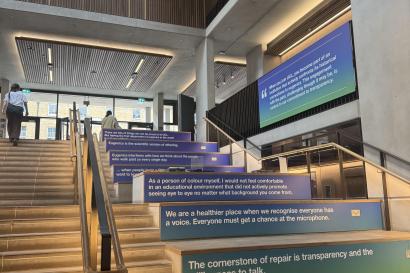Crossing the Border
Weekend trip to Maastricht (II)
Sunday morning came with a beautiful view from my room, and the blessing that is the sun. While in the Netherlands, you learn to appreciate, truly appreciate, the sun. Dressing, washing, breakfasting occurred all before heading out. With some extra time, I grabbed a piece of bread and walked to the park across from the hostel to feed the many ducks. Their colors are beautiful; some are even unfamiliar to me. A piggish goose kept hissing at me, and so unfortunately got more bread than I wanted to give it.
I noticed, as I fed the little water birds, that one duck hobbled. Upon closer look, I saw it only had one foot. Like a pirate with a peg leg, it walked. Again and again, I threw bread at it until it finally scooped up the food before the damn goose ate it. Soon it hobbled back to the water, constantly accompanied by another male duck. Soon I was without bread. I squatted and watched the birds, some taking to the water, others remaining by me, curious. A duck couple eyed me and walked by, while another shook water from its feathers and searched the ground for scraps. The goose took to the pond, swimming towards the limestone wall that once defended Maastricht’s center from invaders.
It was go-time again. A bus took us to the outskirts of the city. Despite the wonderful, glorious sunny day, we were going to a place devoid of light – the Maastricht caves. A little walk, and then an iron door hidden under overgrowth. With three gas-burning lanterns and a charismatic tour guide, we entered.
The caves of Maastricht are not natural. Beneath the city are layers and layers of limestone, once sought-after building materials. Before some of the tunnels and caves were filled in, there were over 200km (124 miles) of these underground corridors. Digging began in the 13th century, and only stopped about a hundred years ago. Many pieces of charcoal-drawn art are on the walls of this extensive limestone maze, made to be an attraction for tourists. Deeper into the caves, the air gets clammier. There is no air flow.
At one point, the tour guide, Paul, tells us of how the French tried several times to invade Maastricht. The Fort Sint Pieter was made to protect against the French from firing on Maastricht. In an attempt to destroy the fort, the French went into the caves and tried blowing it up from underground.
“But the French, as you can see, did not win. There are layers of iron in the rock, much too strong for the explosives they had. So they stood in that corner, waiting with their fingers in their ears. And they are still waiting, cause that’s the direction the explosion went,” Paul said. He shines a flashlight at a large section of the cave that is haphazardly caved in, rather than carved.
“Do not feel so bad. The French – they are so stupid – would not have succeeded anyway. We are about 150 meters away from the fort. They were not even close,” Paul added. We laughed. He then quickly asked if any of us was French; no. I did wonder if he’d ever been caught off guard by an actual French tourist.
The ceiling got taller as we went on. At one point, to experience the darkness, he went ahead. With our hand on the wall, we were to navigate to him in this one-way corridor.
I have experienced true darkness in the night at the Grand Canyon, but even that did not compare to a darkness that never knew light before fire was introduced by human hands. There was a palpable weight to it. I shuffled slowly, slowly, terrified that I would trip and fall or smash my face. Minutes passed to get to the end of the not-long corridor. When my starving eyes finally saw light – finally, saw a glimmer of Paul’s lantern – the image was ethereal. The light was a solid shape, too weak to actually penetrate the darkness. The light had form, and I could see why light is such a powerful theme in any theology.
Without light, one can only survive in the caves two days. It isn’t particularly cold, but it is humid. Without the ability to dry, one gets colder and colder until hypothermia sets in. Without sight, one could be going in circles around a pillar and feel that they are moving towards the entrance. Even the tour guides – Paul included – have not seen all the caves, all the tunnels. Humans are truly dependent on light. The sense of danger we were in, completely dependent on flashlights and lanterns, was exciting – but a few students were not so thrilled about the dense darkness.
Soon the cave walls changed from the lines of pick-axes to cement brick. We had reached a central point of the tour. Electric lights were flicked on.
“During World War Two,” Paul explained, “we hid many paintings here for safety. Guards were here to protect the masterpieces, including the Night Watch.” (The Night Watch is one of Rembrandt’s masterpieces)
“How did they hide this place from the Germans?” Someone asked.
“We didn’t. As you know, Hitler was an, ah, art collector. He wanted a big, big museum with many paintings. He wanted the Night Watch and other Dutch art. He thought, ‘I will let them stay there in the caves where they are safe, and collect it peacefully after we have won the war.’ But as you know, he came in second. So we kept the paintings and moved them back to museums after the war.”
It was a good thing the Germans never tried to invade the caves, too – unbeknownst to the Nazis, not only paintings were there, but also a transmitter that could tell the British air force weather patterns in the Netherlands.
From there, we wound to the entrance of the caves. I wanted to add a drawing to the limestone walls with my charcoal, but alas, it was forbidden. One portrait in the caves is of Wilhemina as a child – the grandmother to the current queen, Beatrix (who is resigning at the end of this month, actually). Queen Wilhemina had visited the caves of Maastricht in her youth. Another famous visitor was President George W. Bush, to which we all asked: “Why didn’t you let him get lost?” Paul joked that another famous visitor was Osama bin Laden, but he couldn’t talk about that one.
We thanked our wonderful tour guide as we left the cave into the daylight. Moving from the stark darkness to the bright light was like upgrading from a 1960’s black-and-white TV to an HD LCD flat screen. Everything was brighter and more vibrant, full of color and life! With packed lunches in our bags or hands, we began our hike towards Belgium. The temperature had for once, gloriously, risen to non-Winter heights. I shed my raincoat and walked up towards the fort the French had failed to blow up, and looked down at Maastricht. I could see the blood-red tower of the basilica, and the spires of its many other churches. Maastricht’s religious history can only be matched in the Netherlands by Utrecht. Unlike Utrecht, though, it has made use of several of its churches for purely secular means. One church is now “Funville”, a playground and camp for kids, while another is a bookstore. A bookstore! I need one. I need one now.
Turning away from the image of the city, I began hiking at the back of the group, taking pictures and smelling earth. I’ve never been terribly outdoorsy; for most of my life, activities I enjoyed typically included sitting on my ass. But after living in a city, I realize how important nature is to me. Even just being in the proximity of forests changes much. As I grow, I appreciate nature more, and find being outdoors rejuvenating and refreshing. The technological age offers much, and has changed much in the way of childhoods, but it too, I think, can make one see the outdoors in a more appreciative light.
Unlike most of the Netherlands, the land here rolls. Undulates. Trees sprout greens, flowers struggle upward, farmland stretches in brown-golds, houses dot here and there. Walking down a dark dirt path, I can hear sheep. Sure enough, we come upon a whole flock. We can enter the fenced-in area and be among the baas and grazing. A student scares the sheep, and we move on – I’m disheartened. Chantal notes that the sheep could be pregnant. He thinks himself a sheep dog, but to the sheep, he was a wolf.
I stay behind and watch the sheep. I kneel so I’m not taller than them. A lamb looks at me curiously, but when I raise my hand, it is scared. I coo, and hold some straw. It sniffs curiously before darting away with a black lamb. An adult baas and walks by me, wool soft save for the straw tangled in it. Sufficiently behind the group, I get up and leave, waving to the sheep. They are creatures easily overlooked, easily taken for granted. But for me, it’s exciting. Any animal outside the context of zoo or amusement park excites me. Seeing animals, domestic or wild, in settings more customary for them rather than forced – it inspires and soothes me.
I catch up with the group – lunch time, sitting across from another flock of sheep. We eat sandwiches and drink cherry soda (the drink provided for us.) I munch on an apple as John, a fellow student, plays on his harmonica. Many hikers pass by, often with dogs. Most dogs are not on leashes; they follow masters as friends and equals. I pet friendly, curious pups that run off and back to their hiking owners. I miss dogs. I miss my dog – she passed away four years ago, but I still think of her often. Fondly. Lovingly. I grew up with her. Domino, my Dalmatian. I think of her ashes on my hearth back home. Would she have liked living in the Netherlands? Maybe. She would have had more canine friends, at least.
We continue. We descend past the sheep, cross a small rapid stream, and find ourselves in open farmland, poised on large, plump hills. A young vineyard sits, bare, waiting for fruit. I sweat now. I will surely burn, but others will too; several of us pale and ghostly individuals joke and laugh at how vulnerable our skin is, how red we shall be. Like lobsters, or cardinals, before peeling to reveal the fluffy marshmallow skin beneath.
I am at the back now, not because I want to (as before), but because the incline is steep. I need to focus. I’m sweating and huffing and puffing. Focus on breathing. My light backpack now feels like a bundle of bricks. My hat, while it keeps the sun out of my eyes, is like a microwave cooking my skull. My thighs burn, and with every step, hurt. I’m a thick girl, I won’t deny. My thighs are large, and my hips don’t lie. During hikes or long walks, my legs rub together viciously. I know my inner thighs are cut and bleeding now, but no use complaining. I can do it. Don’t let anyone see the pain, and just go. Comfort can come later.
Reaching the top is glorious. We pause, and I try to catch my breath. Seeing so many elderly hikers gives me inspiration to keep going.
“Goededag,” one says. I nod and return.
“Dag,” someone else says. I smile. Their little dog barks and runs off into the field.
Others just smile and nod. So active! As I said, the sun is precious here. No one wastes it. We begin walking down into a forest. A small patch of wild daffodils spring up – I pick the oldest one, bare of leaves. Its yellow is happy and unapologetic. I carry it as we descend, and cross a cobblestone building that houses a café. A little village stretches past a bridge we cross, and then – finally – we find a small, black sculpture, phallic and unassuming. The border to Belgium is here.
I take a step. Bam! – in another country. Is the daffodil now foreign contraband, grown on foreign soil?
I have my picture taken with the border marker. We then wind through this little Belgian town none of us know the name of and are rewarded homemade ice cream from a local shop. I order strawberry and caramel – the sweet tastes work even better than I thought. From here, our journey ends. We catch a bus back to Maastricht, legs aching and tongue pleased with the chill of cream and sugar.
By now, my inner thighs are very unhappy with me. I tuck my daffodil into my shirt as though a boutonniere. I fall back, quickly, from the group. It does not matter – we can make it back however we wish. I have the train ticket and instructions. I do make it back, though with some difficulty, physically and mentally. Honestly, though, making back with only one easily corrected mistake is not bad.
Maastricht was an experience, a truly European city with its mish-mash of old, new, old-turned-new, and blended-new-into-old. I “crashed” a wedding, ate a divine meal, shared drinks with friends, winded through an underground maze, and walked right over the border into another country.
Now I’m sitting in Pancakes!, as usual.
One of the waitresses recognizes me.
“You’re back again!”
“Haha, yeah. I tried another place, but it was no good!” I say, honestly. This place has the charm, service, and deliciousness that I dream of. Writing here is bliss, and my stomach is pleased with my choice. I chat with the waitress a while – her nickname is Lizbet. I tell her of my Maastricht trip after she finally learns I’m not a tourist, but a student (no wonder she was confused that I came here so often!)
“Oh, Maastricht is lovely,” she says. “If I did not live in Amsterdam, Maastricht is the only other place I would consider living in. It is beautiful.”
And I agree with her.

Kaylie Crawford
<p><span style="color: rgb(29, 29, 29); font-family: Arial, Verdana, sans-serif; font-size: 12px; line-height: normal; background-color: rgb(237, 237, 237);">I'm Kaylie Crawford, a tea-drinking writer with a desire for travel and poor coordination skills. I hail from the small town of Dracut, Massachusetts, and study writing at the gorgeous Ithaca College in New York. Besides doodling, snapping photos, and reading, I love adventuring with friends (or just staying in with a home-cooked meal and a movie). I plan to see the world and meet the many beautiful people in it, and share my shenanigans with others in hopes to spread some smiles.</span></p>






